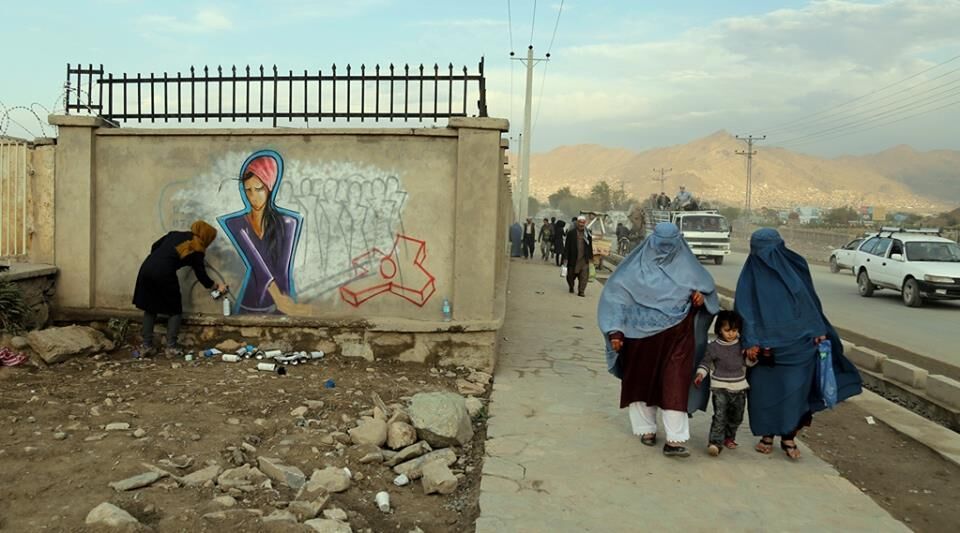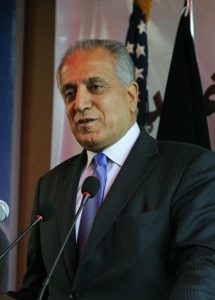
Written by Karim Merchant and Gry Synnevåg.
By design, peace processes tend to be a patchwork of discussions with a variety of key individuals and groups, under the general oversight of a designated group or recognised institution, sometimes even a figurehead, to ensure all views are articulated and all actors involved. The process tends to be promoted by an international, regional, or domestic desire to bridge a rift with external assistance, and supports a locally-led process. Overall, it tends to be a frustrating and slow process, prone to as many stops as starts in attempt to ensure all parties reach the finish line together.
A ‘puppet regime controlled by foreigners’

Most of the criteria above could not be applied to the Afghan peace talks that commenced in January 2019, with face-to-face meetings between U.S. Special Representative for Afghanistan Zalmay Khalilzad and Taliban negotiators in Doha. The discussions started with a four-point agenda of withdrawal of foreign forces from Afghanistan, assurances that the Taliban will not host or support any counter-terrorism on Afghan soil, agreeing to a ceasefire as a confidence building measure and an intra-Afghan dialogue to begin between the elected government of Afghanistan and the Taliban. To date, the Taliban view the National Unity Government of President Asraf Ghani and CEO, Dr Abdullah Abdullah as a “puppet regime controlled by foreigners”. The Afghan government, has therefore, been left out of these discussions.
Less peace, more exit strategy?
A sixth round of talks between the US and the Taliban was completed on 10th May, with the US stating “some progress” has been made, while Mullah Baradar, co-founder of the Taliban movement claimed to be waiting for a date for international troop withdrawal. It appears that this was the main point that brought the Taliban to the negotiating table, and only the US has the political capital to negotiate on this topic. However, it is the emphasis on the first two agenda points that leads some analysts to conclude that this is less about peace and more about a second attempt at an exit strategy out of Afghanistan for the international community in the post-2014 period.
‘Afghan good enough’
The first attempt was led by the US in 2014, building a ‘sustainable and capable’ Afghan National Security Force, as it was known then. Despite international military concerns over the premature nature of the troop drawdown, they were forced to constantly lower the bar on what was an acceptable level of military competence by the international military forces, referred to as the ‘Afghan good enough’ level. The inability of the Afghan security forces to repel an expanding Taliban presence led to a significant loss of Afghan lives and an opportunity for the Taliban to gain ground.
Fears of a collapse in the economic development of Afghanistan once internal troops drew down to a fraction of their presence was offset by a report from the United Stated Geological Survey US of up to a trillion dollars’ worth of natural resources ready for Afghans to benefit from. However, the cautious nature of private investors in the mining sector resulted in negligible large scale investment compared to plans for 2014 and beyond. As a result, a face-saving discourse took place that involved exaggerating the presence of a relatively nascent Islamic State franchise – this would allow the Afghan government to request an increased international military presence, and the US to send troops as part of its ongoing Global War On Terror obligations targeting Al Qaida and Islamic State.
US-Taliban ‘peace negotiations’ sans the Afghan government
With the failure of various regional groups and formal Afghan efforts to broker a peace dialogue between the Afghan government and the Taliban, the US had begun its own negotiations directly with the Taliban at their ‘Embassy’ in Qatar. In response, Russia and China, amongst other countries have also hosted similar talks in their own capitals, often with the same Taliban delegation, with a geo-political gamesmanship agenda, ensuring anything that is agreed upon with the Taliban is also aligned to their own respective political objectives and regional strategies – all under the guise of peace talks.
Not being invited to the US-Taliban peace negotiations, the Afghan government rightfully viewed this as a threat to its legitimacy and authority. With renewed zeal and not wanting to be left out, the National Unity Government of Afghanistan pursued an inter-afghan dialogue as an entry point into these latest peace discussions, but with short and long term objectives. The Afghan government seemed to have cast aside a five-year, multi-phased road map to peace it had tabled in February 2018 at an international conference in Geneva – probably because that whole process ran out of political steam after lengthy attempts to nominate a peace committee to lead the process, the membership of which could not be agreed upon by all parties concerned.
This renewed effort of immediate involvement would take the form of a representative Afghan peace delegation meeting with the Taliban negotiators in Doha. Many weeks passed by as a lengthy consultative process took place in Kabul. In April 2019, the Afghan government finally agreed to send a 250-person Afghan peace delegation to make the initial visit to Qatar, to meet with the approximately 20-strong Taliban negotiating team. Numerous reasons have been used to explain why the Afghan peace delegation ended up postponing the meeting of 19th April 2019. The most telling remark being from a member of the Doha-based Taliban delegation, expressing surprise at the proposed Afghan delegation being the size of a “wedding party”.
Decades of mutual mistrust
The longer-term involvement was to be based upon the recommendations of a national consultative Loya Jirga (grand council) held in Kabul 29 April-3 May 2019 on restoring peace to Afghanistan. This assembly brought together a cross-section of Afghanistan, from Jihadist warlords and traditional powerbrokers to activist groups and community representatives. However, it was boycotted by a number of senior figures, including CEO Dr. Abdullah, ex-President Karzai and all the presidential candidates standing for election in September of this year. Most of them stated that the Loya Jirga will be used by the President to make campaign promises and begin political negotiations to ensure his re-election. However, one fact this process has confirmed is that any coherent strategic decision-making on behalf of the Afghan people is still constrained by decades of mutual mistrust between Afghan decision-makers and powerbrokers, and that the reasons for this are still under various stages of resolution.
Who decides on peace in Afghanistan?
Judging by the level of interest from foreign diplomats, the Taliban appear to be a priority. It was reported recently that Mullah Baradar and his Doha-based negotiating team have met with senior representatives from the UN, Pakistan, Germany, the EU and Indonesia. Meanwhile, China is holding talks with Tajikistan and Russia with Iran, all on Afghan peace implications – all awaiting the US to broker a deal with the Taliban. Ironically, just as the Taliban were excluded from the formal statebuilding exercise that forged the current Afghan nation in Bonn in 2001, it is now the Afghan government that is being excluded.
In the meantime, US-Taliban peace negotiations will start a seventh round in a few months, focusing mainly on some sort of framework agreement on “foreign troop withdrawal, guarantees that will prevent the use of Afghanistan soil by any groups or individuals against the security of the United States or any other country, and a reduction in violence leading to a comprehensive ceasefire”. Perhaps intra-Afghan dialogue and negotiations will also be given a little discussion time. Although peace negotiations cannot continue without an Afghan presence to ensure ownership and a political desire to collaborate to develop a truly Afghan formula, this does not appear to be an issue to the US-Taliban dialogue.
Peace comes with compromise
Experienced negotiators and peace-builders acknowledge that peace comes with compromise as the price. A delicate balance is struck across a spectrum of stakeholders ranging from personality-driven rhetoric of those with the most political capital at one end, and at the other end, incremental and internally-owned, more sustainable peace processes that blossom from individuals, groups and communities. This process seems to have forgotten the latter altogether, for whom the fabric of a society is being patched and re-woven, as the magnitude of the impact means they will continue to pay the price of someone else’s oversight. According to Afghanistan’s Independent Human Rights Commission, that price includes the death of over 75,000 civilians…and still counting.

Karim Merchant is a Visiting Fellow at Noragric and a consultant on policy, programme and project development and management in the fields of humanitarian assistance, food security, conflict-sensitive development and peacebuilding.

Gry Synnevåg is an Associate Professor at Noragric, where she is also a former Head of Department.


